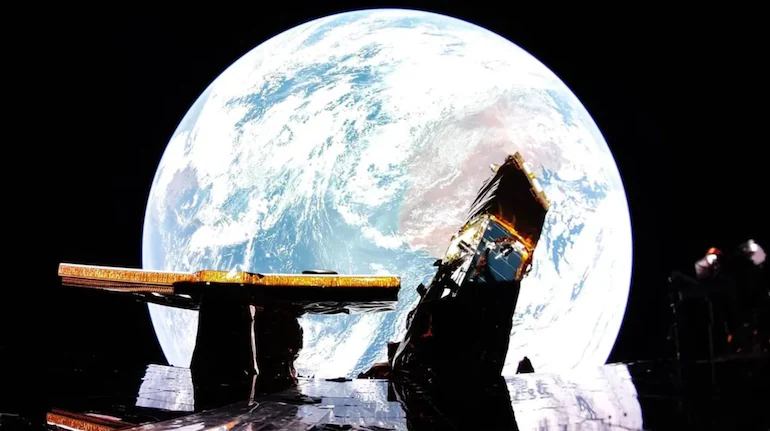Firefly Aerospace, a private US-based space company, has successfully landed its Blue Ghost spacecraft on the moon, marking a significant milestone in private space exploration. This marks Firefly as the first private company to achieve a “fully successful” soft landing on the lunar surface. The touchdown occurred at 3:35 AM US Eastern Time (08:35 GMT) on Sunday in the Mare Crisium region, a prominent lunar basin visible from Earth.
While Firefly becomes the second private company to reach the moon, it claims to be the first to achieve a fully successful soft landing. Last year, Houston-based Intuitive Machines attempted a moon landing with its Odysseus lander, which suffered a hard landing, leaving its instruments mostly damaged but the lander intact.
Firefly’s mission is part of NASA’s Commercial Lunar Payload Services (CLPS) program, which aims to utilize private industry to support NASA’s return to the moon. The Blue Ghost spacecraft carried 10 scientific and technological payloads, including NASA instruments designed to study lunar dust, radiation, and surface materials. The key instruments onboard will measure the moon’s internal heat flow, prevent lunar dust from accumulating on equipment, and include a retroreflector for laser-ranging experiments.
Launched aboard a SpaceX Falcon 9 rocket from Florida’s Kennedy Space Center on January 15, the Blue Ghost mission is expected to continue with two additional missions in 2026 and 2028, aimed at delivering more scientific payloads and supporting NASA’s long-term lunar goals.
At the landing event, Acting NASA Administrator Janet Petro emphasized that the moon remains a key component of the US’s ambition to “dominate” space.
The successful landing underscores the growing role of private companies in space exploration, with NASA and other space agencies increasingly depending on commercial partners for scientific and technological advancements. Meanwhile, other nations, including China with its Chang’e program, are progressing with their own lunar missions, with plans to send astronauts to the moon by 2030.


